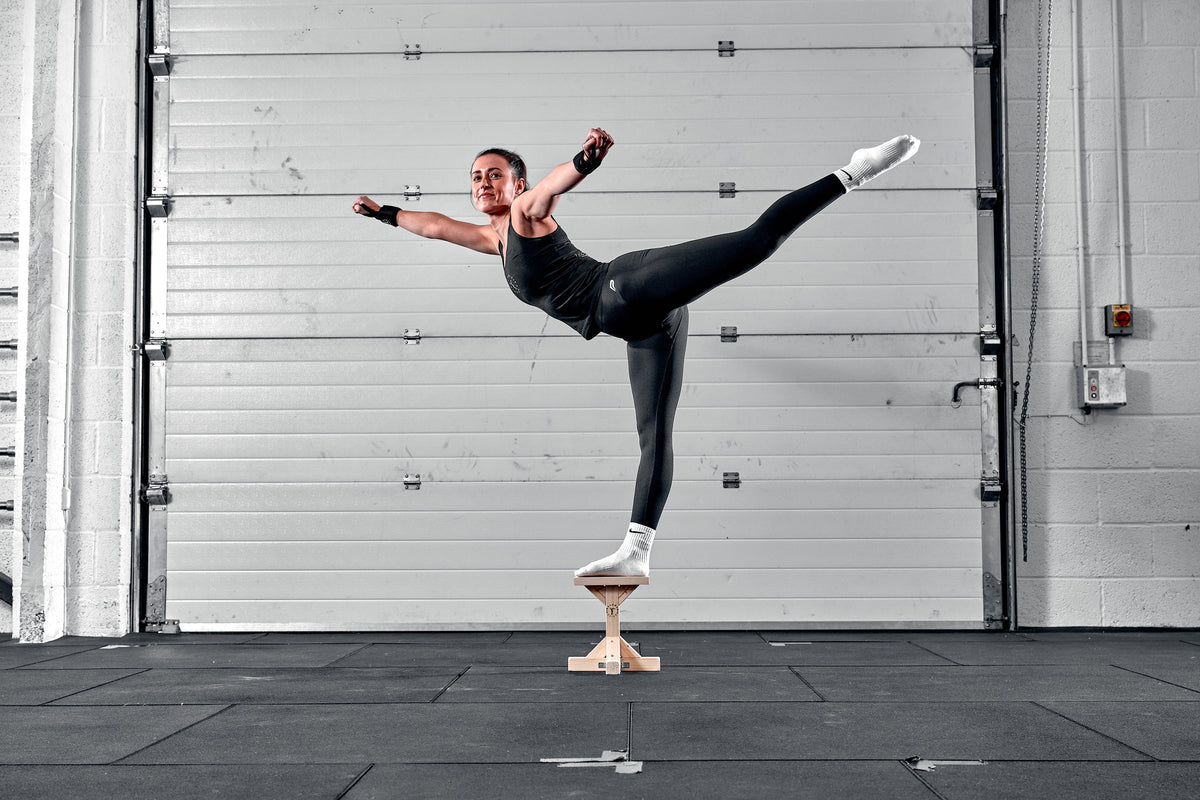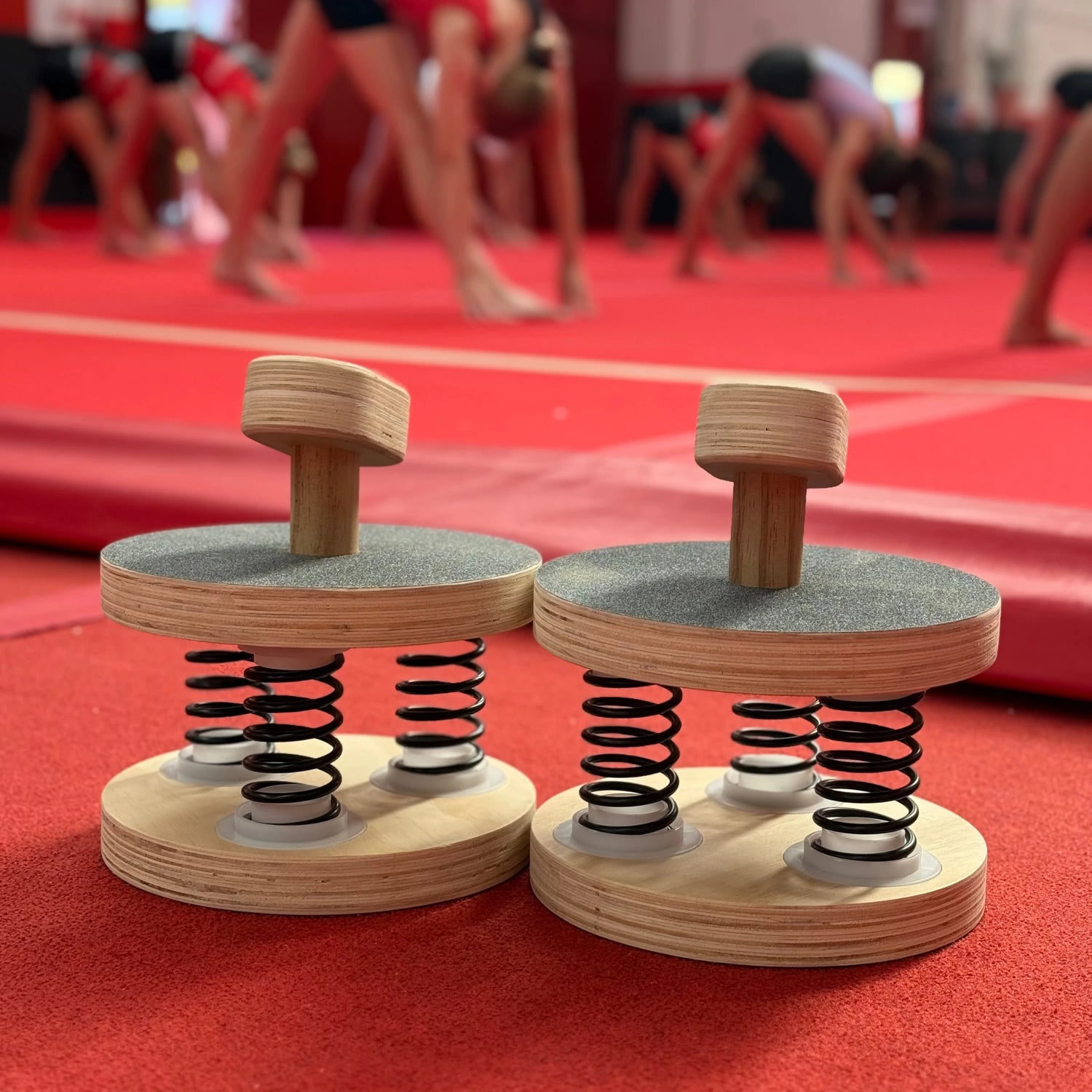
Balance Exercises to Improve Strength and Stability
|
|
Time to read 6 min

Check out our exciting new balance product launches. Developed and tested by...
|
|
Time to read 6 min
Balance is a fundamental component of fitness that is often overlooked. While strength, endurance, and flexibility are typically prioritized, balance is crucial for overall physical health and functionality and an important part of overall health.
It plays a significant role in daily activities and can prevent falls, especially in older adults. Balance exercises enhance coordination, strengthen muscles, and improve stability, leading to better performance in various physical activities and a lower risk of injuries.
There are so many reasons to improve your ability to balance. Overall health and fitness levels will no doubt increase, making everyday life more enjoyable, alongside increasing your overall body awareness and what it's capable of.
Below we have listed the key 5 reasons to throw yourself into balance exercises today.
Injury Prevention: Good balance helps prevent falls and injuries, particularly in the elderly and athletes. Strengthening the muscles involved in balance can protect joints and improve overall stability. This muscle strength will decrease your overall risk of injury.
Improved Athletic Performance: Many sports require excellent balance. Improving balance can enhance performance in activities such as running, cycling, skiing, and gymnastics. Whether your a professional athlete or amateur, performing simple balance exercises as part of your daily routine is the best way to enhance your performance.
Functional Fitness: Balance is essential for everyday activities, such as walking, climbing stairs, and carrying objects. It ensures smooth and coordinated movements, making daily tasks easier and safer.
Enhanced Posture and Core Strength: Balance exercises engage the core muscles, which are crucial for maintaining good posture and reducing back pain. Core strength will reduce any loss of balance whilst running or performing other balance training exercises.
Better Coordination : Balance training enhances the communication between the brain and muscles, leading to improved coordination and reflexes. People of all ages will benefit from understanding how their weight shifts and the linked health benefits of performing balance exercises.
Balance exercises can be divided into several categories, each targeting different aspects of stability and strength. Incorporating each of these into your physical activity will give you overall better balance and stability in your day to day life.
1. Static Balance Exercises: Static balance exercises involve maintaining a position without moving. These exercises help improve the ability to hold a posture and are typically the starting point for beginners.
2. Single-Leg Stand: Stand on one leg, keeping the other foot off the ground. Hold this position for 30 seconds and switch legs. To increase difficulty, close your eyes or stand on an unstable surface.
3. Tree Pose: A yoga pose that involves standing on one leg while placing the sole of the other foot on the inner thigh of the standing leg. Raise your arms overhead and hold the position.
4. Tandem Stance: Stand with one foot directly in front of the other, heel to toe. Hold this position for 30 seconds, then switch the front foot.
Dynamic balance exercises involve maintaining stability while the body is in motion. These exercises mimic real-life activities and sports movements.
Walking Heel-to-Toe: Walk in a straight line, placing the heel of one foot directly in front of the toes of the other foot. This exercise challenges balance and coordination.
Lunges: Perform forward, backward, or lateral lunges. These exercises not only improve balance but also strengthen the legs and core.
Single-Leg Deadlift: Stand on one leg, bend at the hips, and extend the other leg behind you while reaching towards the ground. This exercise targets the hamstrings, glutes, and lower back.
Incorporating movement into balance exercises can further enhance stability and strength. These 3 balance exercises will accelerate your balance and control unlike any others.
Bosu Ball Exercises: Use a Bosu ball to perform squats, lunges, or push-ups. The unstable surface challenges balance and engages multiple muscle groups.
Step-Ups: Step onto a bench or platform with one foot, then bring the other foot up to meet it. Step down and repeat. This exercise improves leg strength and balance.
Single-Leg Squats: Stand on one leg and perform a squat. This advanced exercise targets the quadriceps, hamstrings, and glutes while challenging balance.
The core plays a vital role in maintaining balance. Strengthening the core muscles can significantly enhance overall stability.
Planks: Hold a plank position on your forearms and toes, keeping your body in a straight line. To increase difficulty, lift one leg or arm off the ground.
Bird Dog: Begin on your hands and knees, then extend one arm and the opposite leg simultaneously. Hold the position, then switch sides. This exercise improves core stability and coordination.
Russian Twists: Sit on the ground with your knees bent and feet lifted off the floor. Lean back slightly and twist your torso from side to side, holding a weight or medicine ball.
Various tools can enhance the effectiveness of balance exercises by adding an element of instability.
Balance Boards: These are flat boards that pivot on a central point, requiring continuous adjustments to maintain balance. They are excellent for improving proprioception and coordination.
Stability Balls: Large inflatable balls used for a variety of exercises. They engage the core and challenge balance during activities like sit-ups, push-ups, and leg lifts.
Foam Pads: Soft pads that create an unstable surface for exercises such as single-leg stands or lunges. They are particularly useful for rehabilitation and beginner balance training.
Incorporating balance exercises into your fitness routine can be done in various ways, depending on your fitness level and goals.
Warm-Up: Start your workout with balance exercises to activate the muscles and improve neuromuscular coordination.
Supersets: Combine balance exercises with strength training in supersets. For example, follow a set of squats with a set of single-leg stands.
Dedicated Balance Sessions: Allocate specific sessions to balance training, focusing on a variety of static and dynamic exercises.
Everyday Activities: Integrate balance challenges into daily life, such as standing on one leg while brushing your teeth or walking heel-to-toe down the hallway.
While balance exercises are beneficial, it’s essential to approach them safely, especially if you are new to balance training or have existing health conditions.
Start Simple: Begin with basic exercises and gradually increase the difficulty as your balance improves.
Use Support: When starting, use a wall or chair for support to prevent falls.
Progress Gradually: As your confidence and ability grow, progress to more challenging exercises and unstable surfaces.
Listen to Your Body: Pay attention to how your body responds and avoid pushing through pain or discomfort.
Balance exercises are particularly beneficial for older individuals as they can significantly reduce the risk of falls and related injuries. Improved balance leads to greater independence and quality of life, by reducing not only the fear of falling but the risk of falling itself.
The following balance exercises are a really good idea to improve quality of life and reduce the risk of ongoing health problems, they can also complement physical therapy routines.
Tai Chi: A low-impact exercise that emphasises slow, controlled movements and weight shifting, enhancing balance and coordination.
Chair Exercises: Simple exercises performed while holding onto a chair for support, such as heel raises or seated leg lifts.
For athletes, balance exercises can enhance performance and reduce the risk of sports-related injuries.
Improved balance contributes to better agility, coordination, and reaction times. Take a look at the best exercises for a great way to take your game to the next level. The number of repetitions and use of resistance weights can be utilised depending on ability level.
Plyometrics: Jumping and explosive movements on unstable surfaces can improve power and balance simultaneously. A balance board can be a great tool for plyometric exercises.
Sport-Specific Drills: Incorporate balance training into sport-specific drills, such as single-leg jumps for basketball players or balance beam exercises for gymnasts.
Balance exercises are a crucial component of rehabilitation for patients recovering from injuries or surgeries. It helps restore normal function in the lower body, alongside increasing strength and stability.
A physical therapist will commonly recommend a simple exercise to compliment their treatment and enhance balance ability.
Ankle Stability Exercises: For individuals recovering from ankle injuries, exercises such as heel-to-toe walking or balancing on a foam pad can restore stability.
Postural Training: Exercises that focus on correcting posture and improving core stability are essential for patients with back pain or postural imbalances.
Balance exercises are a vital aspect of fitness that contribute to overall strength, stability, and functionality.
They are essential for injury prevention, athletic performance, and daily activities. By incorporating a variety of static, dynamic, and core-strengthening balance exercises into your routine, you can enhance your physical health and well-being.
Whether you are a beginner, an older adult, an athlete, or undergoing rehabilitation, balance training offers significant benefits that can improve your quality of life and physical performance and there is a type of exercise to suit anyone.





